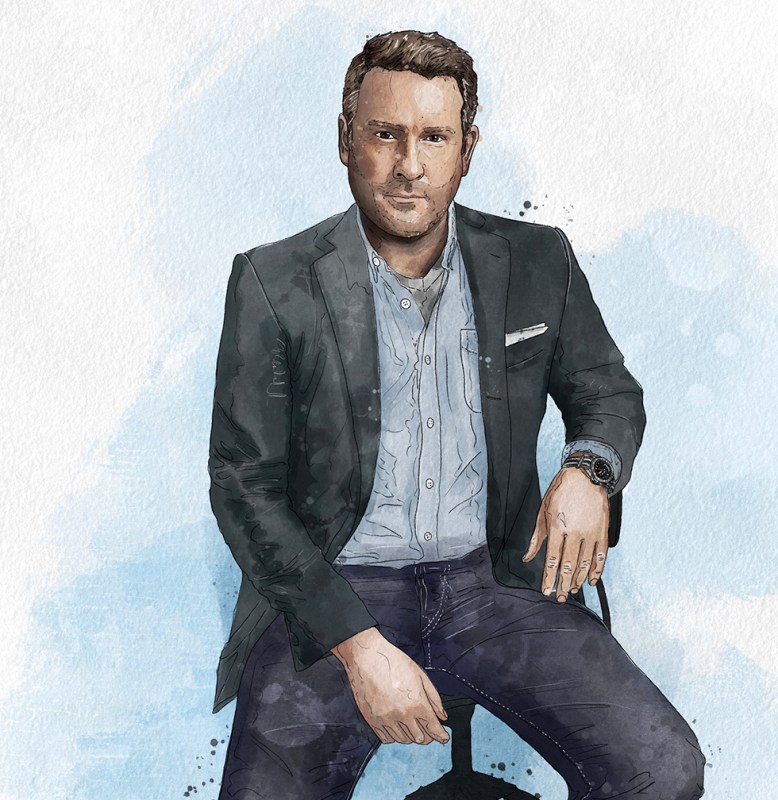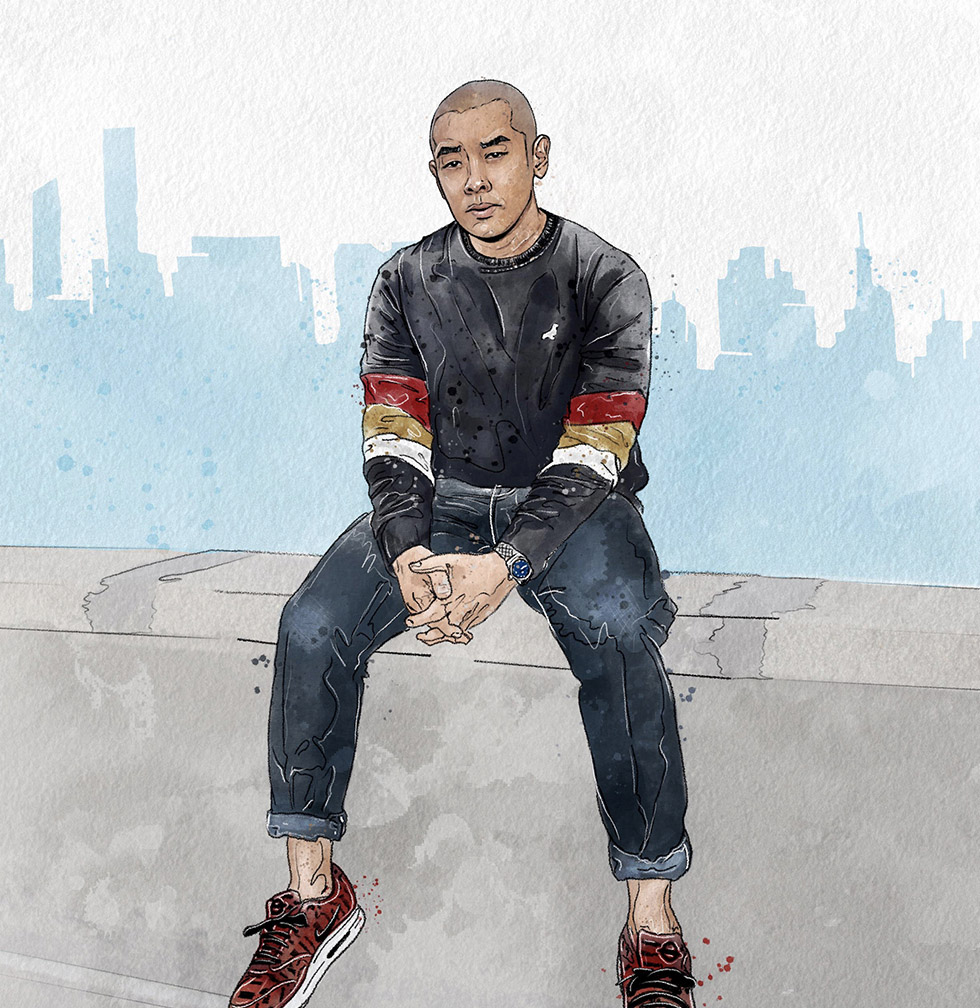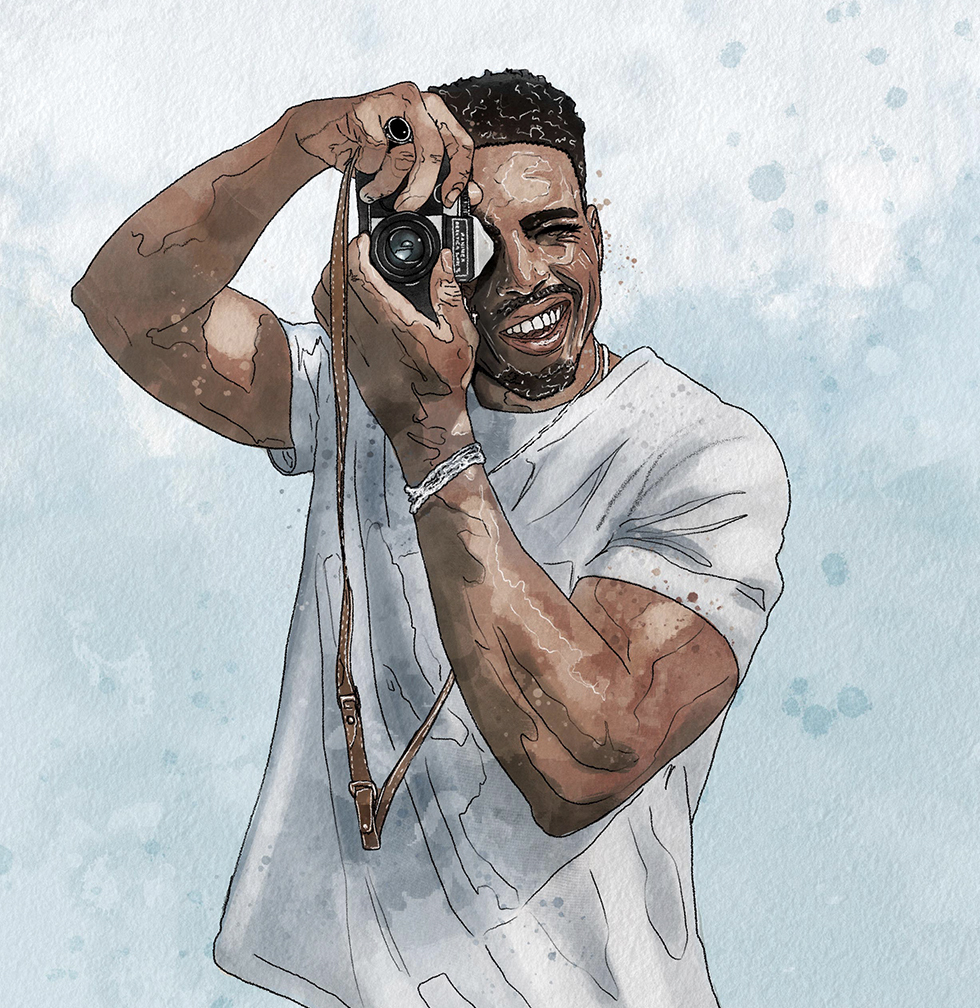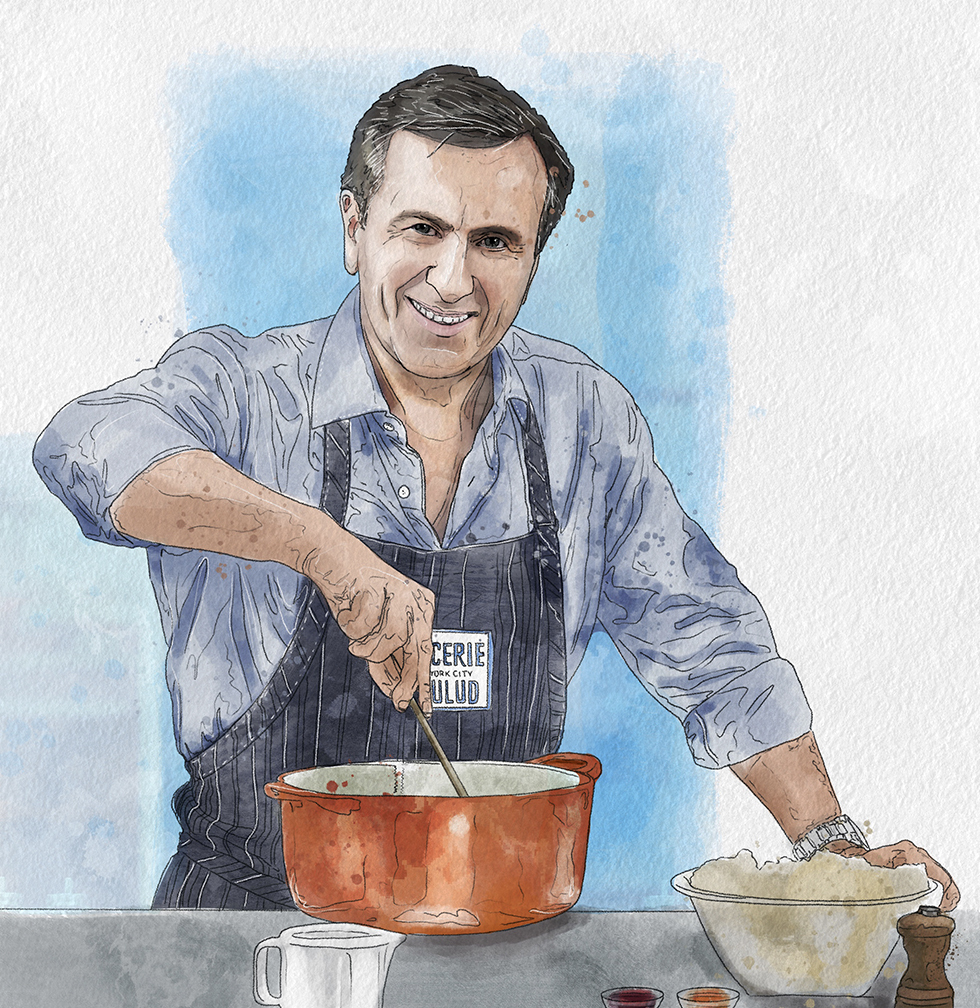Of all the phrases relating to the parting of a man and his money, few are more gratifying to use than “worth every penny.”
Those three words communicate the idea that while yes, you spent — perhaps more than you had originally intended or are traditionally comfortable with — you did so knowing that the item you purchased was ultimately worth it.
Such items can come in many forms, but all have a story. So we decided to sit down with a few of our favorite in-the-know gents about their most prized possessions, how they came to own them, and the reasons they continue to resonate long after their original acquisition.
Today’s subject: award-winning menswear designer Todd Snyder, who cut his teeth (and his fair share of fabric) working for the likes of Ralph Lauren, J.Crew and The Gap before launching his own eponymous label back in 2011.
Nearly a decade later, Snyder has won a slew of awards and his line is widely recognized as the standard bearer for American menswear. His New York boutiques have become a destination for sartorially inclined tourists from all over the globe, and his slate of collaborations with everyone from Champion to Timex to a forthcoming project with L.L. Bean are eagerly anticipated by regular fellas and the fashion cognoscenti alike.
And while Snyder freely admitted that this exercise was akin to “trying to pick your favorite kid,” he ultimately landed on a pair of vintage Levi’s that he picked up at an L.A. flea market 20 years ago. We chatted with him about what makes these jeans so special to him, his love of vintage in general, and the weird world of denim collecting.
InsideHook: Tell me the story of how you came to own these particular Levi’s.
Todd Snyder: Well, I’ve always been a huge admirer of vintage, in general. I think ever since the days that I started working at Ralph Lauren, back in … gosh, ’93. And then I worked there again in ’99 and 2000. Being there, you learn to appreciate vintage and you also learn the difference between good vintage and bad vintage.
The thing with vintage, it’s really interesting. Obviously, you’re finding one-of-a-kind items. You run across dealers all the time, people that collect and resell, and there’s this whole ecosystem really built around that market that I didn’t know about. A lot of times, what you do with vintage is you use it as inspiration. Whether it’s a wash, or whether it’s a detail, or whether it’s a silhouette, a pocket … just so much is derived from vintage. That’s the reason why we all collect it.
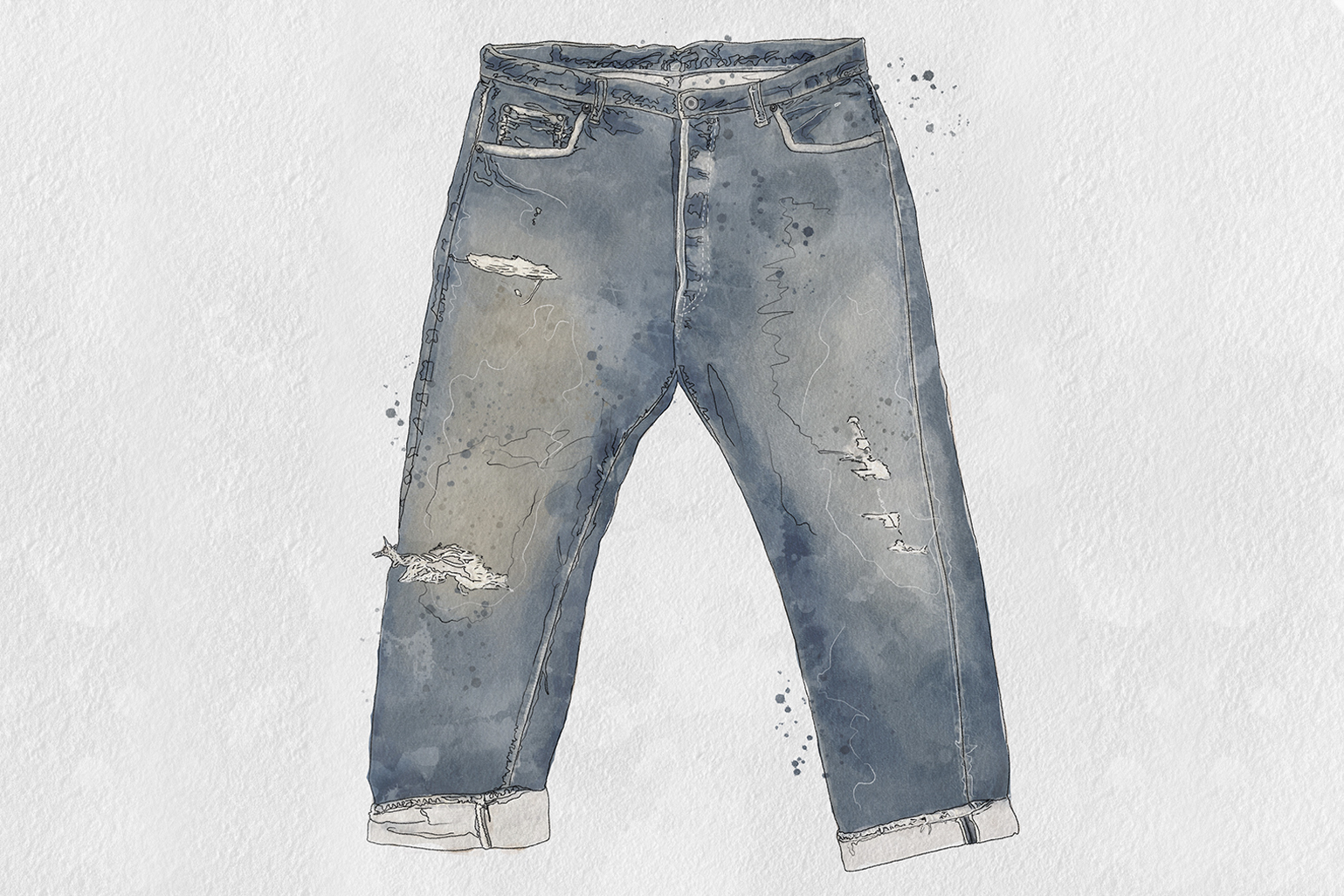
At the same time, you’re always looking for that perfect pair of anything, whether it’s a pair of jeans or a jacket. I’m a bigger guy. I’m a 36 inch waist and I’m 6’2, so it’s really always hard. I love the way vintage looks, but I can never find my size. In anything. I’m always buying things and reinterpreting them.
I remember, I was at the Rose Bowl, and I just so happened to come into this gentleman’s booth. His name’s Christophe, a French guy who owns Mr. Freedom. This was probably in 2000, I would say, 2001. A lot of these guys in L.A. that go to the Rose Bowl to sell vintage started off truly in the rags business. When they say you are in the rag business, you truly get bundles of clothes. Basically, when people donate their clothes or decide to give them away or what have you, a lot of them end up being gathered, and they call it grading. You essentially have somebody who goes through literal bales of clothing, and you go through it one by one, and you start deciding whether this is good vintage or bad vintage.
When you say good vintage versus bad vintage, is that primarily a function of condition? What’s the criteria?
It has a lot of factors to it. It’s like collecting vintage baseball cards, in a way. There’s a whole hierarchy on how this stuff gets graded or valued. It has to have the right patina, it has to not have any alterations done to it. It can have wear and tear on it. That’s always desirable.
There’s certain times, especially back in the ‘50s, ‘60s and ‘70s, where things were a little bit more coveted. Denim was … I don’t think clothing was as disposable as it is now. I think it was definitely more desirable and an investment, and there’s quality that was put into clothing back then, typically made in the USA. These jeans were made in the U.S.A. They were done in a way that was the old way of doing things.
A selvedge is a great example of an old way of doing things. It’s a narrower loom. What that means, the narrower loom, is it’s a longer process for weaving, but it adds a certain character to the denim. It’s more uneven, let’s say. It’s not so manufactured. There was a certain way of making denim that was lost in America, and definitely is gone today, which is really sad, because Cone [Mill, in North Carolina] was the last manufacturer of selvedge denim, and denim in America, and they had to close down their plant about two years ago.
Anyway, as those things go away, of course the things that were produced in those factories are now coveted and they have a higher value. It’s a combination of finding these rare items that were made in the old way, and also Levi’s has always been the gold standard, as far as collectibles in apparel. I’ve seen denim go for tens of thousands of dollars, depending on the quality.
You hear all sorts of stories when you talk to these collectors, they’re always looking for the white whale. How do you find that jean that they found in some mine that collapsed back in the day? Or they find all these jeans that got covered by an avalanche or something. Those things are super, super rare, and also highly valuable, because Levi’s will come in and want to buy it, and put it in their collection.
Whether it’s a pair of vintage denim or some other possession whose value can’t be described in simple monetary terms, those things that are “worth every penny” all share a common trait: they make us feel something. They have surpassed the realm of mere object and become a conduit for emotion.
This is a concept that the team at Lexus understood deeply when designing the new LC 500 Convertible, an automobile engineered in every way to stimulate the senses and create an experience of peak exhilaration and joy. This is a car built to give the driver a serious case of the feels.
It begins with a chassis strengthened by underbody bracing, resulting in a greater sense of connection to the road and a more visceral, responsive driving experience — long story short, when you rev the 5.0-liter naturally aspirated V8 under the hood, you’re gonna feel all 471 horses, from your eager right foot all the way up through the raised hairs on the back of your neck.
You’ll hear it too, thanks to an Active Sport Exhaust System that foregrounds the vehicle’s thunderous exhaust notes, as well as an Intake Sound Generator that carries the engine’s intake pulses through a diaphragm and then pipes the sound into the cabin to enhance the V8’s rumble.
What you won’t hear is unwanted noise, owing to a transparent polycarbonate wind deflector that helps restrict unwanted turbulent air from entering the cabin, in addition to an Active Noise Control system that combines insulation and absorption techniques to filter out harsh sounds and let you chat comfortably with your passengers.
Bottom line: this isn’t a car to just get you from A to B — this is a car that makes the trip from A to B a destination unto itself. That’s what makes it a keeper.
Ok so back to Christophe at the Rose Bowl…
So I came into his booth, and I came across a pair that were my size, and that never happens. And it was a selvedge pair of Levi’s. I think — and again, I’m not positive — but I think they were from the ‘60s, ‘70s era.
How could you tell? Or rather, how can you tell?
You look at the selvedge, and you see what kind of selvedge it is, and you look at the label. And it’s a button fly. They didn’t make a lot of those in the ‘80s, ‘90s and 2000s. If anything, they stopped making them.
You kind of look for all those indicators, and then obviously you go to the experts and you ask them, “What year do you think this is?” A lot of it’s not exact science. It’s really more opinion-driven, which doesn’t really hold a lot of water, but at least it gives you context. You can pinpoint it, plus or minus, I would say, a decade, a decade and a half. That’s generally speaking how most vintage is.
I’ve been a vintage collector for a long time now, and for me, there’s certain things that are highly covetable. Levi’s is one. Champion is two — I have been collecting Champion probably since the early ‘90s. I think anything American that has history to it, meaning almost over a century … Red Wings, Timexes, all of that, really, are the things that I love. These are all the things that I learned when I was at Ralph, and I just learned to appreciate it. You see these things in people’s collections, and for me, finding my own size was golden. I found a half-split leather café racer as well that’s unbelievable. Both of them I covet, because again, they both fit me. Like I said, I’ve always been into vintage, but it’s always been one of these things that I never really get to partake in other than being inspired by it. It was really awesome finding this pair of jeans. They just fit me perfectly.
Did Christophe give you a pretty good deal, or did he hold you over the coals?
Yeah, it’s debatable. I think I paid two or three hundred bucks. Again, this is in 2000, denim really hadn’t broken the $200 barrier yet. We were still in the day where denim was still $100, $150. To buy a pair of vintage for … it might have been three or four. I don’t remember exactly what I paid for them. I just remember thinking, “Oh, that’s reasonable.” He probably gave me a deal.
Do you remember the first time you wore them?
I don’t remember specifically, but I always got really excited when I could wear them. What’s great about them is they’re so authentic. They just have the best character. There’s a lot of patches on them, a lot of darning. Darning is the repairing of jeans, where if you get a hole, there’s a specific technique that really repairs it, the way they used to repair jeans back, again, in the ‘50s and ‘60s.
They didn’t have a lot of clothes back then and people really coveted what they had. They wore it a lot and it’s the type of thing that you don’t want to be buying a new pair of jeans every two or three months. The best thing about these jeans is they do get better with age. You always want that great jean that has that perfect amount of wash, that isn’t fake. It’s real. It took years to decades to make. You have to care for jeans in a certain way. It’s made of indigo, which is the natural dye stuff that isn’t very fast, meaning the fabric doesn’t hold the color very well. It fades over time. That’s what makes denim so amazing, is that it fades over time.
These things, I’ve had them for 20 years now, and they definitely … they start to get a little fragile towards the end. Mine are on the cusp of “Do I take them in and repair them again, or do I just…” I wear them very, very sparingly. Last time I wore them, I got a hole in them, and it’s starting to get to the point where I could see it happening a lot. I just don’t want these things to go.
Do you have a particular place where you take them to get repaired?
I used to go to a place in L.A., it was called Denim Doctors. My new place I go to is a friend of mine who used to own the Jean Shop, Eric Goldstein. Before that he was at RRL, and he was kind of the master of denim at Gap, as well. He does denim repair now at home, or he has people that do it with him. He is, interestingly enough, working on a factory in Louisiana that bought all of the Cone denim, all the antique selvedge shuttle looms, when they went out of business. They’re recreating denim manufacturing here in Louisiana, it’s called Vidalia, and then [the repair business] is denimrepair.com.
When I find these experts, and Eric Goldstein’s one of them, you latch onto them. Same thing with Christophe. Christophe and Eric, those really good friends. Because he always comes across these really amazing things. As I do my collabs, it’s almost like a history book for me. An encyclopedia of all these things, where you can actually ask, and you’d get different stories from each collector that are just so unique.
There’s definitely this subculture of denim, and also collecting. I’m definitely not an expert, by any means, but I do know who to go to. That’s a thing I’ve learned very early on when I got into this business, I can’t remember the exact saying, but it’s like “If you don’t know what you don’t know, find someone who does know.” It sounds so idiotic, but at the same time it’s so perfect because that’s true, in all parts of business.
Regarding repair, it’s interesting when you consider something that had character when you got it, but now it has character that’s yours specifically.
Do you feel like you’re adding to the “story” of this pair of jeans?
Oh, for sure. I know this sounds gross, but I don’t think I’ve washed them since I’ve bought them because I’m afraid they’ll fall apart. You spot clean them and stuff like that, but it almost adds character if you spill on it, or what have you. Definitely, I’ve been adding to it. I don’t know … I’ve probably been more careful not to ruin them. I don’t know if it’s thinking that I’ll pass them on to anybody, but at least they’ll be in good shape when I do.
Are you a “don’t wash your jeans” guy in general?
It depends on the denim. I’m definitely a bit of a denim snob. I only buy selvedge, for the most part now. Like I said to you before, Cone used to be the gold standard of selvedge denim in America. They’re the one that supplied Levi’s, and so on and so forth. Then probably Ralph, we definitely used them at J.Crew. I used them in my business.
Anything selvedge, I covet. It depends on the denim. Sometimes I like jeans that are dark and don’t have a lot of wear and tear on them. Sometimes, I like to wear them for a good couple of years. It adds all the different wrinkles, the weathering and all that. When you wash them, it really takes on a whole new character.
If you wash jeans the first time you wear them and you don’t get that abrasion on certain parts, like where you’re bending your knee, and where there’s friction, they just all fade on a uniform basis. If you wear them for a long period of time, the longer you go, the better the character. The first time you wash them, when you wash them, you have to wash them with Woolite in cold water, then hang-dry them. That’s the best way to wash denim. And then, once you get there, you don’t touch them again for a while.
Usually, a pair of jeans will last me at least five years, but they can go on for 10. There’s definitely levels to it. It is a bit of an art that I’ve learned over time how to do it, and obviously, we make denim for a living. You learn what the dos and don’ts are. You experiment, too.
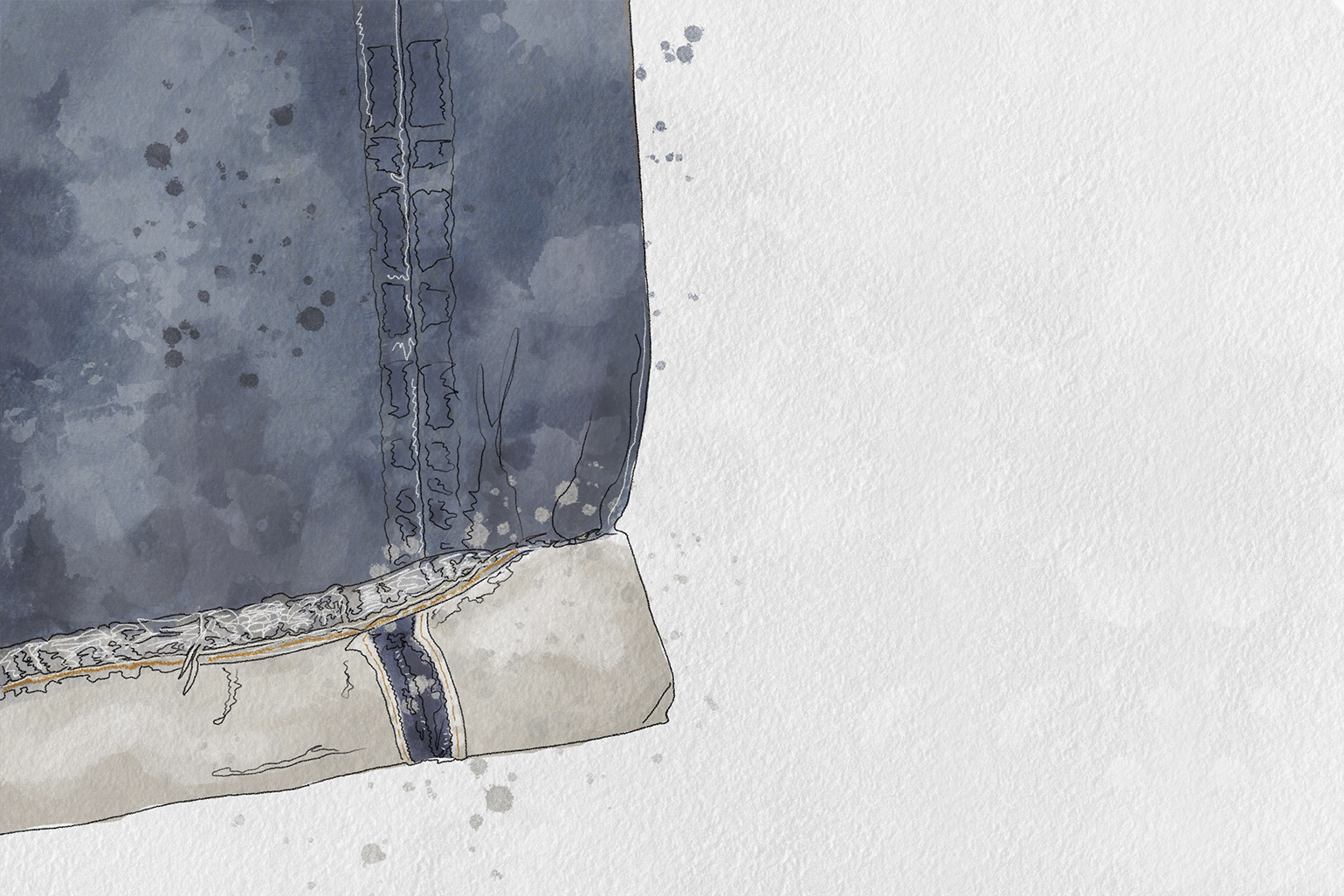
Is it your hope that somebody may come across a pair of Todd Snyder jeans 25 years from now, and then keep them for another 20?
I mean, that would be awesome. Denim is a tough business to make it to that level, meaning Levi’s is pretty much the only one that … well, Lee is definitely there, but Levi’s is the gold standard. Lee is probably a second or third.
But to be at that level, you’ve got to endure probably a century of time. I definitely go into it hoping that’s what happens, meaning that people covet the clothes, and collect them, and treat them well. I try to design for things that you’re going to have for a long time.
I look at apparel, especially men’s clothing, as an investment. I always try to layer on to my existing wardrobe. I don’t want to be designing things that are big one day and not big the next. I try to design in more of a classic sense, but having a modern sensibility — looking at the fit, looking at the fabrication, looking at the silhouette, and making sure that things are always pushing forward, but are still rooted in that classic sensibility.
Whether I will ever make it to that level, I doubt it, just because there are very few brands … there’s probably 10 brands that I could name that have made it through that, and they’re all 100 years old. All of which, mind you, I try to collaborate with. The reason why I do that is because I know I can’t replicate what they have done for the span of their company and what they’ve stood for. That’s the reason why I collaborate with them, because in my lifetime, I won’t see that. For me, it’s just an honor to work with these brands. Levi’s is one I’m still knocking on their door to do a collaboration. Gently knocking, I would say.
I design with the intent of thinking about the customer and thinking about layering things onto your wardrobe, not necessarily changing your wardrobe. What I love is how old Hollywood used to dress. I’ve talked about this quite a bit. Paul Newman and Steve McQueen and Marlon Brando. They just had great style. It’s pretty amazing that you look at some of those photos and it’s still current.
You would look cool if you dressed that way today.
Exactly. I learned all that working at Ralph Lauren. When I got to Ralph, it was all about looking backward to move forward. I knew of Paul Newman and knew of Steve McQueen, but then when you really start looking at them stylistically, you’re like, “Oh wow, these guys were so cool.”
That’s where I fell in love with that art of looking backward to move forward, and really getting into vintage. Still, for me today, that’s a huge part of my process. I have a huge collection of books that I go through, magazine swipes, vintage shopping, traveling. Japan has probably some of the best places on the planet for vintage American apparel, just because they collected it the quickest.
Ralph really popularized the whole vintage craze, and then it became a huge business and people were grabbing as much they could. It’s calmed down quite a bit since then, and most of the stuff found its way into people’s collections and archives. But it’s still a rare craft. It’s a big part of how I design my collection.
Illustrations by Dylan O Brien
